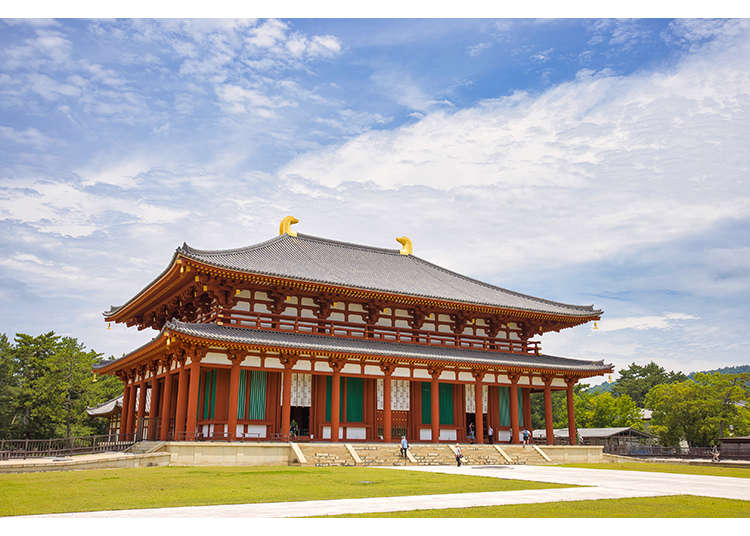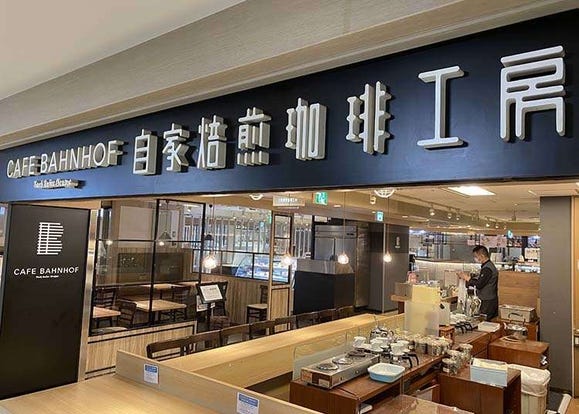
In addition to World Heritage sites, national treasures, and Important Cultural Properties, Nara also offers intimate ways to connect with a variety of traditional crafts. With insights from foreign travelers who participated in monitor tours—special trial experiences designed to gather feedback—we'll share some of the charms of this incredible ancient city.
*This article includes advertising content.
Ancient Nara's cultural legacy: Head temple of the Hosso Sect of Buddhism
Kohfukuji Temple, founded in 710, prospered as the Fujiwara clan’s temple and featured an impressive complex in the early Heian period (794-1185). Unfortunately, fires plagued the temple, destroying many of its pagodas and treasures. Yet, each time, dedicated monks and others committed to the temple’s preservation meticulously rebuilt it.
Currently, a "Tenpyo restoration" project is underway, aiming to restore the temple to its original splendor from the Tenpyo period (729-749). The Central Golden Hall, restored in 2018, offers a glimpse of the temple's former grandeur, especially when illuminated in the evening, creating a truly sublime experience. The five-story pagoda, a national treasure, is undergoing its first major repairs in 120 years, with the hope that these efforts will preserve ancient knowledge and techniques for future generations.
Even today, Kohfukuji Temple's bell still rings regularly, keeping time for the local people. On the tour, you can even ring the bell yourself. Although the responsibility of letting the sound echo through the town was a bit nerve-wracking, Vanessa shared with satisfaction, "It was a refreshing and wonderful experience."

- Step into a high-definition VR recreation of Kohfukuji Temple on temple grounds with the Visual Guide. This special guide offers an exclusive look inside the normally inaccessible three-story pagoda and lets you step back in time to see the temple precincts as they once were—all on your smartphone. Don’t miss this chance to experience the history and philosophy of Kohfukuji Temple so you can fully appreciate its ongoing restoration.


Fascinating Buddhist art at the Nara National Museum
Designated as an Important Cultural Property, the Nara Buddhist Sculpture Hall in the Nara National Museum is a prime example of authentic Western-style architecture from the mid-Meiji Period (1868–1912). The hall’s exhibitions primarily focus on Japanese Buddhist art and even non-Japanese visitors can become familiar with these Buddhist statues using the helpful audio guide. The museum showcases nearly 100 Buddhist statues, with the impressive five-meter standing sculpture of Kongo Rikishi (Kinpusen-ji Temple, Nara) captivating visitors. We invite you to step inside the rich and fascinating world of Buddhist art while learning about the faith that inspired it!

Feel 1,000 years of history, surrounded by primeval forests at Kasugataisha Shrine
Kasugataisha Shrine, established in 768 by the Fujiwara clan on the sacred slopes of Mt. Mikasa, enshrines four deities. The entrance to the shrine’s precincts is guarded by ancient giant cedars, some between 800 and 1,000 years old. At the end of the central walkway sits the vibrant vermilion main shrine building, encircled by an outer corridor. Clara said the numerous lanterns "gave off a mystical, emotional aura." Be sure to take some time to visit this breathtaking shrine.


Special workshop experiences: Make your trip unforgettable!
A plethora of hands-on workshops are available to connect you with Japanese culture.
Make tea whisks with Tango Tanimura
At Tango Tanimura, a shop where the craft of making tea whisks (chasen) has been passed down for about 550 years, you can learn about the history of chasen directly from Tango Tanimura, the 20th-generation master. Visitors can even try threading their very own tea whisk, a popular activity among foreigners. Jessica said, "It was a completely new experience for me." This is a wonderful opportunity to immerse yourself in the uniquely Japanese culture of wabi-sabi.

Roll ink at Kinkoen
Kinkoen has preserved the traditional craft of making Nara sumi ink for over a century. Here, you can try rolling your own ink in a process called "nigiri-zumi." The final ink block is a one-of-a-kind original, and you can take it home as a souvenir in a beautiful Paulownia wood box. One of the highlights is learning about the origins of Japanese ink from a master calligrapher in a fun and easy-to-understand way. Elodie was elated that "it even included a calligraphy lesson. It was so fun."

Make omamori (amulets) at Kohfukuji Temple
Create your own protective amulet at Kohfukuji Temple in a workshop led by Ryukai Kirimura, a Jurin-in monk with 25 years of experience, and Zane, a New York native with a deep understanding of Japanese culture.
The experience begins with participants applying zuko (rubbing incense) to their palms and wrists. Then, a prayer for mental purification is made by pressing the hands together, with the right hand representing the Buddha and the left hand representing oneself. Everyone chants the Heart Sutra, which signifies the wisdom and guidance of the Buddha, a solemn sound that transfixes all who hear it.
With minds now at peace, it's time to craft the amulets. Omamori serve as a portable protective force, connecting the bearer with the power of the mandala (universe) through the mantra’s words. Participants write out the Mantra of Light, pouring themselves into every letter. This mantra is imbued with the power of three elements: the Buddhist rosary, the lotus, and light.
Once you've finished writing, the monk adds his own personal seal to the paper, a special signature of sorts. The mantra is then folded and placed inside the amulet pouch along with a small wooden tag. Finally, everyone receives a gomagi (prayer stick), on which they write their name and a wish, used for prayers at Kohfukuji Temple.
Our participants, Kate, Kimie, and Thein, shared their thoughts on the experience: "Making an amulet with your own name in it is a special, one-of-a-kind experience." "There was a template, which made writing the mantra fun and easy." "I was pleasantly surprised when I received the monk's personal stamp on my paper." All three had a very meaningful experience.


Various other tours are also available to enjoy special aspects of Nara you normally couldn't experience. Niku said, "It was awesome going off the beaten path and enjoying some unique sightseeing." Why not make some unforgettable memories yourself?
Japan Arts Council
Agency for Cultural Affairs, Government of Japan
*Prices and options mentioned are subject to change.
*Unless stated otherwise, all prices include tax.
Popular Tours & Activitiess
-

Kyoto's Hidden Treasures Open This Winter! Enjoy Exclusive Access to 15 Rare Cultural Sites (Jan-Mar 2026)
by: Guest Contributor
-

Celebrate a Dreamy Barbapapa Christmas at JR Osaka Station's Twilight
by: Guest Contributor
-
Ad

Discover Timeless Beauty: Kimono-en, a Web Magazine Exploring the Spirit of Kimono
-

Best Things to Do and See Around Kyoto & Osaka in September: Events and Festivals in Kansai
-

November Events in Kansai: Fun Festivals, Food, and Things to Do in Kyoto & Osaka
-
Ad

Café Bahnhof in Osaka: The home-roasted coffee that captivated G20 leaders!
Inspiration for Accommodations
-

Spacious Family Hotel in Namba: 20 Comfortable Stays for Family Fun
-

Charming Hotels to Enjoy the Spectacular Views of Arashiyama's Autumn Leaves from Your Room
-

Experience Stunning Views of Osaka Castle from Private Spaces: Top Hotels Near Osaka Castle
-

Recommended by Visitors! Arashiyama's Best-Rated Hotels
-

Family-Friendly Universal Studios Japan Hotel with Excellent Access
-

Enjoy a Comfortable Stay in Osaka! 10 Hotels with Convenient Airport Shuttle Services
-

Top 10 Recommended Hotels Near Namba Station with Great Access
-

Enjoy Night Views from Your Room! Recommended Hotels in Namba Area
-

Unmissable Bargains! 8 Osaka Capsule Hotels in Japan's Food Haven (From $20!)
-

Hoshinoya Kyoto: This Incredible Japanese Hotel Welcomes You By Boat on a Sakura-Filled River
-

Osaka Koreatown: In Search of the Best Eats in the Korean Roots of Osaka's Tsuruhashi Market
-

Looking to Visit Kyoto in Spring? Here's Your Ultimate Guide to Kyoto Weather and Packing Essentials
by: WESTPLAN
-

5 Popular Things to do in Umeda - Osaka's Central Area!
by: WESTPLAN
-

Autumn in Japan 2025: Fall Foliage Forecast & Where to Enjoy the Colorful Leaves (+Tour Info)
- #best gourmet Osaka
- #things to do Osaka
- #what to do in kyoto
- #what to bring to japan
- #best gourmet Kyoto
- #new years in Osaka
- #what to buy in nanba
- #Visiting Osaka
- #onsen tattoo friendly arima
- #daiso
- #Visiting Kyoto
- #best japanese soft drinks
- #japanese fashion culture
- #japanese convenience store snacks
- #japanese nail trends













